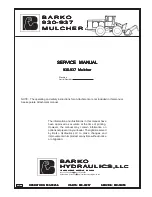
TABLE 3: Use of Attachment Elements on Body Belts
Attachment Elements
Positioning
Travel Restraint
Rear - Waist
Hip - Side D-Rings
7 INSPECTION AND MAINTENANCE
Users of personal fall arrest systems shall, at a minimum, comply with all manufacturer instructions regarding the inspection,
maintenance and storage of the equipment. (See ANSI/ASSE Z359.2, Minimum Requirements for a Managed Fall Protection
Program regarding user inspection, maintenance and storage of equipment.)
7.1 Harness and Body Belt Inspection
Honeywell Safety Products’ inspection requirements incorporate the criteria established by current safety standards. The
inspection criteria for the equipment shall be set by the user’s organization, such that it equals or exceeds the criteria required by
the manufacturer and the standards with which the organziation elects to comply.
Equipment shall be thoroughly inspected by the user before each use, and additionally, by a competent person, other than the user,
at regular intervals of no more than one year for:
• Absence or illegibility of markings/labels.
• Refer to Appendix B: Product Labels for details on accessing harness labels.
• Absence of any elements affecting the equipment form, fit or function.
• Evidence of defects in or damage to webbing straps including broken fibers, fraying, unsplicing,
unlaying, kinking, knotting, roping, broken or pulled stitches, excessive elongation, chemical attack,
burns, excessive soiling, abrasion, cuts, alteration, excessive aging, and excessive wear. (See TABLE 4.)
To inspect, grasp webbing with hands 6-8 inches (152-203mm) apart and bend webbing in an inverted “U”. The surface
tension resulting makes damaged fibers or cuts easier to detect. Follow this procedure the entire length of webbing, inspecting
both sides of each strap.
• Evidence of defects in or damage to hardware elements including cracks, breaks, rough or sharp edges, deformation, corrosion,
chemical attack, excessive heating, alteration, and excessive wear.
Additionally, perform the following hardware checks:
D-Ring: D-ring should pivot freely.
Tongue Buckles/Grommets: Buckle tongues should be free of distortion in shape and motion. They should overlap the buckle
frame and move freely back and forth in their socket. Roller should turn freely on frame. Inspect for loose, distorted or broken
grommets. Webbing should not have additional punched holes.
Cam Buckles: Make sure the cam mechanism is free of debris and engages the webbing properly.
Friction and Slotted Mating Buckles: The outer bars and center bars must be straight. Pay special attention to corners and
attachment points at the center bar.
Quick-Connect Buckles: Make sure dual-tab release mechanism is free of debris and engages properly. Double-check the buckle
locking mechanism by tugging on both halves of the buckle to make sure it is firmly connected and will not disengage without the
use of the release levers.
• Evidence of defects in or damage to integral pads, such as the D-ring pad or 2-slot chest strap adjuster pads, including cracks,
breaks, or excessive wear.
• Evidence of deployed or activated fall load indicators.
TABLE 4: Types of Material Damage
Heat
Chemical
Molten metal or flame
Paints and Solvents
In excessive heat, rope/
webbing becomes brittle
and has a shriveled brownish
appearance. Fibers will break
when flexed. Should not be
used above 180°F.
Change in color usually
appearing as a brownish
smear or smudge. Transverse
cracks when rope/webbing is
bent over a mandrel. Loss of
elasticity in rope/webbing.
Rope/webbing strands fuse
together. Hard shiny spots.
Hard and brittle feel.
Paint which penetrates and
dries restricts movement of
fibers. Drying agents and
solvents in some paints will
appear as chemical damage.
All harnesses are equipped with one of the following fall load indicators:
Broken
Stretched
AFTER FALL
D-RING P
AD LOAD INDICA
TOR
D-Ring Pad Load Indicator:
The D-ring pad has built-in fall load indicators with
pairs of arrows indicating the location to inspect. If
the harness is exposed to fall arrest forces, the pad
will be broken or stretched between ONE OR BOTH
of the pairs of arrows.
Webbing Load Indicator:
Folds sewn into each of the webbing shoulder
straps below the back D-ring pad serve as load
indicators. If the harness is exposed to fall arrest
forces, the stitching on ONE OR BOTH of the
webbing load indicators will rip, and the webbing
will unfold.
Stitched Webbing Fold
BEFORE FALL
AFTER FALL
WEBBING LOAD INDICA
TOR
Broken/Pulled
Stitches
9
Содержание MILLER & MILLER TITAN BODY BELTS
Страница 1: ...I119 Rev G MFP9720029 05 2021 USER MANUAL HARNESSES AND BODY BELTS ...
Страница 30: ...4 1 3 4 1 4 4 1 5 4 1 6 4 1 7 Fig 9 Fig 10 Fig 11a Fig 12 Fig 13 Fig 11b 4 3 Fig 14 Fig 15 Fig 16 30 ...
Страница 33: ...33 ...
Страница 35: ...35 ...
Страница 36: ...36 ...
Страница 37: ...37 ...
Страница 41: ...41 ...










































